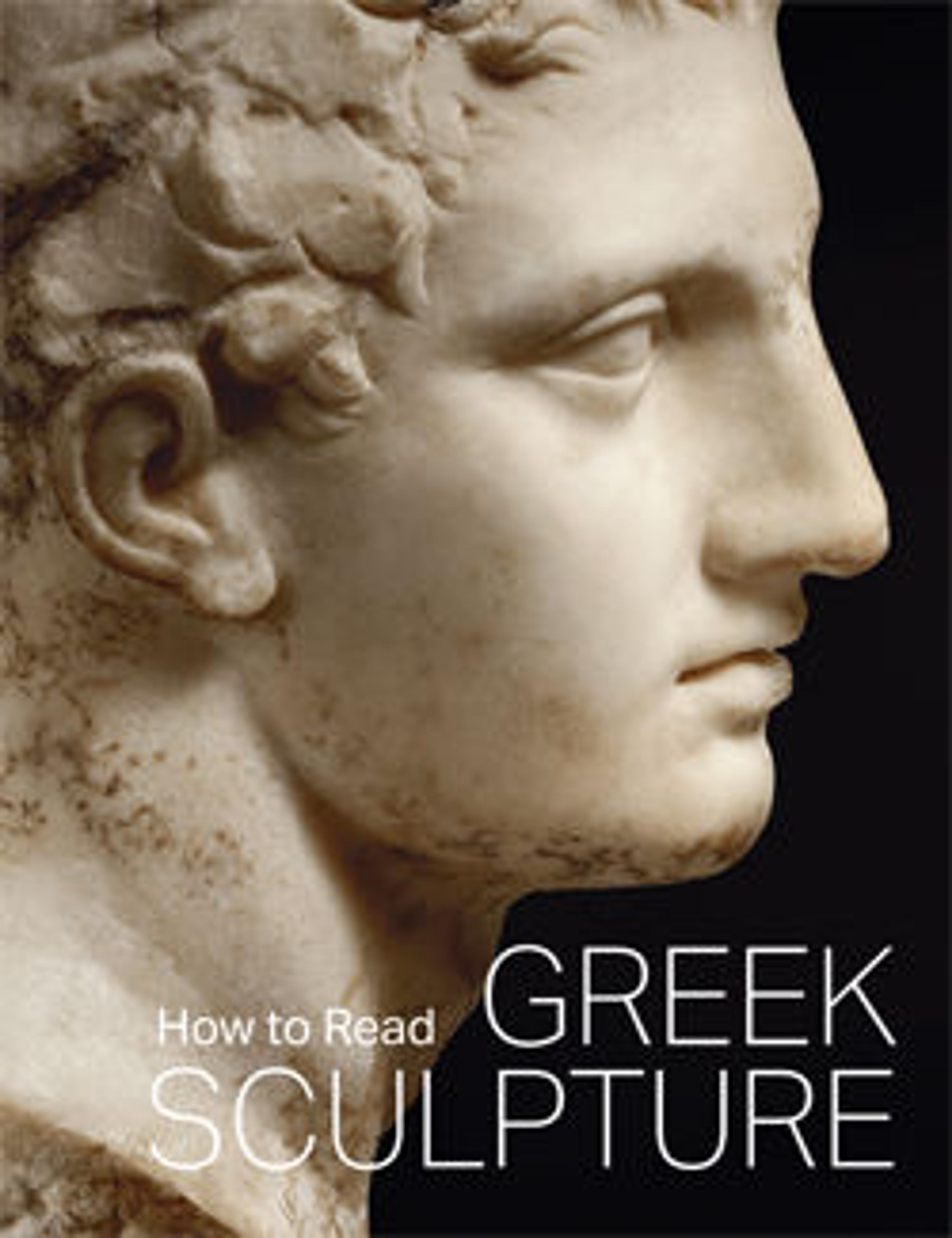Marble statue of an old woman
Copy of a Greek work of the second century B.C.
During the Hellenistic period, artists became concerned with the accurate representation of childhood, old age, and even physical deformity. The range of subject matter was extended to include genre-like figures from the fringes of society. Fine, large-scale statues of fishermen, peasants, and aged courtesans became valued religious dedications, sometimes placed in a park-like setting within the
sanctuary of the god. Although this statue is known familiarly as The Old Market Woman, it probably represents an aged courtesan on her way to a festival of Dionysos, the god of wine. Her delicate sandals and the ample material in her thin, elaborately draped chiton are a far cry from the rough garb of a peasant woman. The ivy wreath on her head marks her association with Dionysos, and the basket of fruit and the two chickens must be dedicatory gifts to the god or simply her own provisions for a long day of celebration. Veneration of Dionysos was widespread
during the Hellenistic period, and ancient literary descriptions give an idea of the extraordinary processions and festivals held in his honor. The flattened composition of the figure is typical of sculpture created in the late second century B.C. The original work may have been dedicated in a sanctuary of Dionysos. The Roman copy could have decorated a garden.
During the Hellenistic period, artists became concerned with the accurate representation of childhood, old age, and even physical deformity. The range of subject matter was extended to include genre-like figures from the fringes of society. Fine, large-scale statues of fishermen, peasants, and aged courtesans became valued religious dedications, sometimes placed in a park-like setting within the
sanctuary of the god. Although this statue is known familiarly as The Old Market Woman, it probably represents an aged courtesan on her way to a festival of Dionysos, the god of wine. Her delicate sandals and the ample material in her thin, elaborately draped chiton are a far cry from the rough garb of a peasant woman. The ivy wreath on her head marks her association with Dionysos, and the basket of fruit and the two chickens must be dedicatory gifts to the god or simply her own provisions for a long day of celebration. Veneration of Dionysos was widespread
during the Hellenistic period, and ancient literary descriptions give an idea of the extraordinary processions and festivals held in his honor. The flattened composition of the figure is typical of sculpture created in the late second century B.C. The original work may have been dedicated in a sanctuary of Dionysos. The Roman copy could have decorated a garden.
Artwork Details
- Title:Marble statue of an old woman
- Period:Early Imperial, Julio-Claudian
- Date:14–68 CE
- Culture:Roman
- Medium:Marble, Pentelic
- Dimensions:H. 49 5/8 in. (125.98 cm)
- Classification:Stone Sculpture
- Credit Line:Rogers Fund, 1909
- Object Number:09.39
- Curatorial Department: Greek and Roman Art
More Artwork
Research Resources
The Met provides unparalleled resources for research and welcomes an international community of students and scholars. The Met's Open Access API is where creators and researchers can connect to the The Met collection. Open Access data and public domain images are available for unrestricted commercial and noncommercial use without permission or fee.
To request images under copyright and other restrictions, please use this Image Request form.
Feedback
We continue to research and examine historical and cultural context for objects in The Met collection. If you have comments or questions about this object record, please contact us using the form below. The Museum looks forward to receiving your comments.
